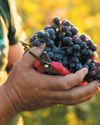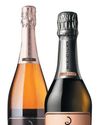Imported to India by Fratelli Wines, Famiglia Cecchi represents one of Tuscany’s top family wineries blending innovation with tradition

The Cecchi (pronounced chekki), Family Group was founded in 1893 by Luigi Cecchi, a man of vision who understood the potential and quality of Tuscany wines, in particular that of the character of its indigenous Chianti Classico, made from the noble Sangiovese grape. Today Cecchi represents one of Tuscany’s top family wineries thanks to Luigi Cecchi’s farsightedness and philosophy, defined as a perfect blend between innovation and tradition.
From generation to generation the family has always taken care to respect tradition, yet at the same time acknowledging that growth and progress is achieved by experimentation, followed by patience and passion. Most importantly agronomic and vineyard decisions taken over the past decades have always aimed at focusing on safeguarding the ecological future of the land through minimal environmental impact.
Tuscany’s breathtaking landscape is much admired by all, for its undulating hills lined with waves of silvery olive trees and horizons of vineyards, with terracotta coloured farmhouses and emblematic cypress trees, a sight that takes one back to its Renaissance origins, where time seems to have stopped. The Tuscan wine industry has steadily sailed forward through centuries of grape growing and winemaking, rewarding those who have a clear vision of quality production without sacrificing authenticity.
The charming Chianti Classico village of Castellina in Chianti in the heart of Tuscany is home to Cecchi’s headquarters and production centre which today manages some 130 staff; 299 hectares of family-owned vines and an additional 71 hectares of rented vines producing some eight million bottles which are exported to over 50 countries. The story of Cecchi has been quite a journey from its modest farming origins to the 1930s when the Cecchi family name became known far and wide outside its Chianti borders.
Bu hikaye Sommelier India dergisinin September/October 2017 sayısından alınmıştır.
Start your 7-day Magzter GOLD free trial to access thousands of curated premium stories, and 9,000+ magazines and newspapers.
Already a subscriber ? Giriş Yap
Bu hikaye Sommelier India dergisinin September/October 2017 sayısından alınmıştır.
Start your 7-day Magzter GOLD free trial to access thousands of curated premium stories, and 9,000+ magazines and newspapers.
Already a subscriber? Giriş Yap

Godinho Historic family owned restaurant
Feasting on Portuguese and Indigenous Goan flavours, relive the calm and quiet of a time long gone by,

Laurent Ponsot is one of Burgundy's most celebrated winemakers
Jon Wyand finally captured the mercurial Laurent Ponsot - a renowned winemaker and vintner known for his exceptional Burgundy wines - on camera

Exploring Brunello vintages
Ten years in the bottle, a long decant, and yet the harsh tannins overshadowed everything.

An ode to the diva grape
It is worth tasting Pinot Noir in all its varied roles - from the shy, delicate ingénue, and simple yet intense New World newbie to the full-on Grand Cru prima donna

Best ways to explore wine in a new city
The first thing most of us want to do when we go to a new city, be it Dallas or Boston, is to enjoy a few good wine tastings

Champagne Billecart-Salmon
One would think that a 200-yearold Champagne as renowned as Billecart-Salmon did not need any marketing, yet Billecart-Salmon AsiaPacific head, Sebastien Papin was recently in India to tell us about the brand and how the wine is best appreciated.

A thoughtfully curated wine experience
Wine tastings at Vintage Wines in Karjat, Maharashtra, are designed to enhance the appreciation of wine and deepen our understanding of it, writes

The legacy of Henri Gouges
The wines of Maison Henri Gouges from the commune of Nuits-Saint-Georges are considered among Burgundy's hidden gems

An overview of Sussex and
Rosemary George describes the importance of Sussex as an appellation and its potential for tourism

Shades of Rosé
Rioja and Navarra share a love for Grenache, producing two very distinct styles of rosé, writes Elizabeth Gabay MW, which succsesfully enrich the category as her tasting notes illustrate